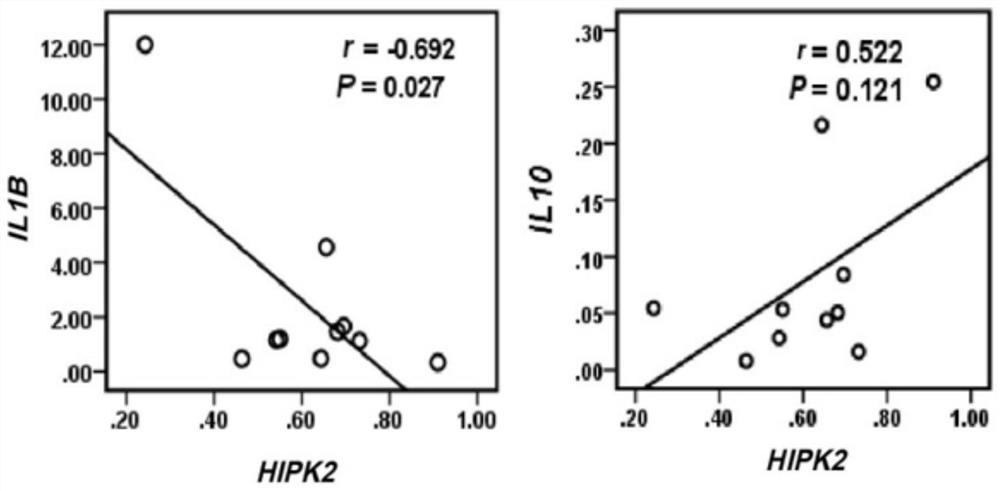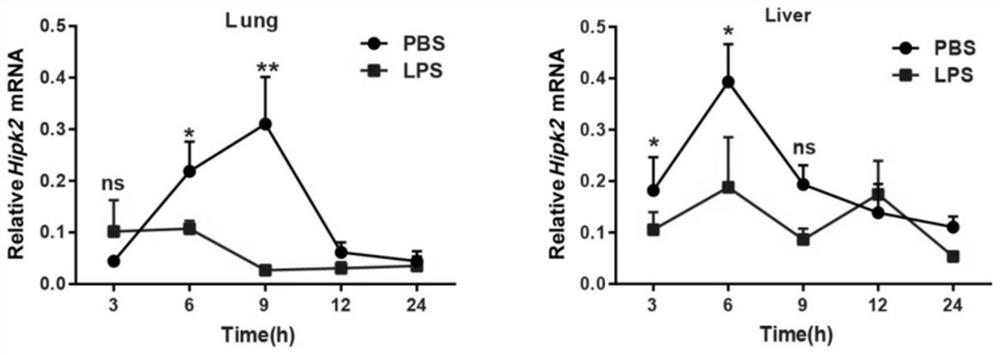Application of HIPK2 in prediction and diagnosis of septicemia
A sepsis and risk prediction technology, applied in the fields of biomedicine and disease diagnosis, can solve problems such as use limitations
- Summary
- Abstract
- Description
- Claims
- Application Information
AI Technical Summary
Problems solved by technology
Method used
Image
Examples
Embodiment 1
[0030] 1. Experimental method
[0031] 1.1 Isolation of human peripheral blood mononuclear cells
[0032] (1) Prepare a 15ml (or 50ml) centrifuge tube according to the volume of the blood sample, and add blood lymphocyte separation solution LSM equal to the volume of the blood to the bottom of the tube;
[0033] (2) Blow the peripheral blood sample in the anticoagulant tube evenly with a gun, slowly suck the blood and add it to the surface of the separation liquid;
[0034] (3) 2200rpm, horizontal centrifugation at room temperature for 25-30 minutes, pay attention to the slow rise and fall of the centrifuge;
[0035] (4) After centrifugation, red blood cells can be seen sinking to the bottom of the tube, the white layer in the middle is mononuclear cells, and the uppermost layer is plasma. Absorb the cells in the middle layer into a new 15ml tube;
[0036] (5) Fill up the centrifuge tube with PBS and centrifuge at 1300rpm for 5 minutes;
[0037] (6) Discard the supernatant....
Embodiment 2
[0057] 1. Experimental method
[0058] 1.1 LPS endotoxic shock model
[0059] The endotoxic shock model uses 8-12 week old littermate pairs (same age and sex) of wild-type and Hipk2-deficient mice. By intraperitoneal injection of LPS at a dose of 36mg / kg, the general mouse injection volume is 150-200μl. The changes in body weight and death of mice were observed 4 hours after the injection. Most mice died within 12-48 hours of LPS injection. Blood collection and organ experiments were carried out within 3-6 hours of LPS injection.
[0060] 1.2 Cecal ligation and puncture (CLP) model
[0061] (1) The mice were weighed, and the mice were fully anesthetized by intraperitoneally injecting 20 μl / g of tribromoethanol according to the body weight;
[0062] (2) Fix the mice supine on the experimental table, fix the limbs with medical tape, remove the hair from the abdomen, and sterilize with 75% ethanol;
[0063] (3) Open the abdominal skin along the white line of the mouse abdomen...
PUM
 Login to View More
Login to View More Abstract
Description
Claims
Application Information
 Login to View More
Login to View More - R&D
- Intellectual Property
- Life Sciences
- Materials
- Tech Scout
- Unparalleled Data Quality
- Higher Quality Content
- 60% Fewer Hallucinations
Browse by: Latest US Patents, China's latest patents, Technical Efficacy Thesaurus, Application Domain, Technology Topic, Popular Technical Reports.
© 2025 PatSnap. All rights reserved.Legal|Privacy policy|Modern Slavery Act Transparency Statement|Sitemap|About US| Contact US: help@patsnap.com



